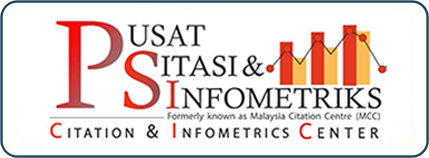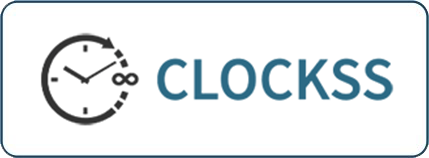Forecasting Public Health Risks in Malaysia: Insights from SEIR Modelling of Infectious Diseases
DOI:
https://doi.org/10.33102/mjosht.v11i1.460Keywords:
Public Health, Infectious Disease, Disease Forecasting, COVID-19, HealthcareAbstract
During the global pandemic of 2020, the Malaysian government implemented a Movement Control Order (MCO) as a mitigation plan to control the spreading of COVID-19. This effort demonstrates a significant decrease in active cases. However, it is disturbing the nation economically. The lack of a visualization hub to predict the spread of infectious diseases in Malaysia disrupts decision-makers’ efficiency in optimizing health sectors. Therefore, this paper aims to forecast infectious diseases in Malaysia using the Susceptible, Exposed, Infectious, Removed (SEIR) model. The SEIR Model predicts the projection of disease-spread cases based on the sample of previous cases. The samples used public health data from the COVID-19 Open Data Repository, which covers 12 states in Malaysia. The finding revealed that the SEIR model demonstrates a sharp decline in susceptible individuals after three months into 2022, a peak in exposed and infectious individuals around the same time, and a steady rise in recovered individuals as most of the population becomes immune. This forecast data can provide earlier insights on the infection trend, allowing actionable recommendations for policymakers and healthcare.
Downloads
References
C. I. Paules, H. D. Marston, and A. S. Fauci, “Coronavirus Infections—More Than Just the Common Cold,” JAMA, vol. 323, no. 8, pp. 707–708, Feb. 2020, doi: 10.1001/jama.2020.0757.
Ahmad LuqmanulHakim Ahmad Sunawari, Aisyah Rahimi, Aminatul Saadiah Abdul Jamil, Shahrina Ismail, and Azira Khalil, “A Policy Examination of Covid-19 Impact on the Radiology Department Standard Operating Procedures (SOPs): The Malaysian Experience,” Malaysian Journal of Science Health & Technology, vol. 10, no. 1, pp. 88–98, Apr. 2024, doi: 10.33102/mjosht.v10i1.386.
I. Ayouni et al., “Effective public health measures to mitigate the spread of COVID-19: a systematic review,” BMC Public Health, vol. 21, no. 1, Dec. 2021, doi: 10.1186/s12889-021-11111-1.
J. H. Hashim, M. A. Adman, Z. Hashim, M. F. Mohd Radi, and S. C. Kwan, “COVID-19 Epidemic in Malaysia: Epidemic Progression, Challenges, and Response,” May 07, 2021, Frontiers Media S.A. doi: 10.3389/fpubh.2021.560592.
M. Amiruzzaman, M. Abdullah-Al-wadud, R. M. Nor, and N. A. Aziz, “Evaluation of the effectiveness of movement control order to limit the spread of COVID-19,” Annals of Emerging Technologies in Computing, vol. 4, no. 4, pp. 1–9, 2020, doi: 10.33166/AETiC.2020.04.001.
Prime Minister’s Office of Malaysia, “Perutusan Khas Perdana Menteri sempena Hari Pekerja 2020,” https://www.pmo.gov.my/ucapan/?m=p&p=muhyiddin&id=4569, 2020.
D. C. Onyechege, N. M. Nor, and A. S. F. Omer, “The Indirect Effect of Coronavirus Disease (COVID-19) Pandemic on Economic Growth in Malaysia: Evidence from The ARDL Approach,” International Journal of Economics and Management, vol. 16, no. SpecialIssue1, pp. 99–115, 2022, doi: 10.47836/IJEAMSI.16.1.007.
F. S. Tabataba et al., “A framework for evaluating epidemic forecasts,” BMC Infect Dis, vol. 17, no. 1, May 2017, doi: 10.1186/s12879-017-2365-1.
C. S. Lutz et al., “Applying infectious disease forecasting to public health: A path forward using influenza forecasting examples,” BMC Public Health, vol. 19, no. 1, Dec. 2019, doi: 10.1186/s12889-019-7966-8.
“Home - COVID 19 forecast hub.” Accessed: Jul. 25, 2024. [Online]. Available: https://covid19forecasthub.org/
B. Long, F. Tan, and M. Newman, “Forecasting the Monkeypox Outbreak Using ARIMA, Prophet, NeuralProphet, and LSTM Models in the United States,” Forecasting, vol. 5, no. 1, pp. 127–137, Mar. 2023, doi: 10.3390/forecast5010005.
J. Wu, J. Wang, S. Nicholas, E. Maitland, and Q. Fan, “Application of Big Data Technology for COVID-19 Prevention and Control in China: Lessons and Recommendations,” J Med Internet Res, vol. 22, no. 10, p. e21980, 2020, doi: 10.2196/21980.
S. Roy, G. S. Bhunia, and P. K. Shit, “Spatial prediction of COVID-19 epidemic using ARIMA techniques in India,” Model Earth Syst Environ, vol. 7, no. 2, pp. 1385–1391, Jun. 2021, doi: 10.1007/s40808-020-00890-y.
H. Manabe et al., “Simple mathematical model for predicting COVID-19 outbreaks in Japan based on epidemic waves with a cyclical trend,” BMC Infect Dis, vol. 24, no. 1, Dec. 2024, doi: 10.1186/s12879-024-09354-5.
K. Alakkari et al., “Forecasting covid-19 infection using encoder-decoder lstm and attention lstm algorithms,” Journal of Intelligent Systems and Internet of Things, vol. 8, no. 2, pp. 20–33, 2023, doi: 10.54216/JISIoT.080202.
N. Rusyidah Azri, S. Sathasivam, C. Jun Nam, and T. Y. Hang, “FORECAST ON COVID-19 CASES IN MALAYSIA USING SIRS MODEL AND ADAMS PREDICTOR-CORRECTOR METHOD (Ramalan Kes COVID-19 di Malaysia dengan Menggunakan Model SIRS dan Kaedah Peramal-Pembetul Adams).” [Online]. Available: http://www.ukm.my/jqma
S. M. Shaharudin, S. Ismail, N. A. Hassan, M. L. Tan, and N. A. F. Sulaiman, “Short-Term Forecasting of Daily Confirmed COVID-19 Cases in Malaysia Using RF-SSA Model,” Front Public Health, vol. 9, Jun. 2021, doi: 10.3389/fpubh.2021.604093.
E. Y. Cramer et al., “The United States COVID-19 Forecast Hub dataset,” Sci Data, vol. 9, no. 1, Dec. 2022, doi: 10.1038/s41597-022-01517-w.
“GitHub - FluSightNetwork/cdc-flusight-ensemble: Guidelines and forecasts for a collaborative U.S. influenza forecasting project.” Accessed: Aug. 13, 2024. [Online]. Available: https://github.com/FluSightNetwork/cdc-flusight-ensemble
“COVID-19 Open Data — Google Health.” Accessed: Jul. 25, 2024. [Online]. Available: https://health.google.com/covid-19/open-data/
Y. Ma, Z. Xu, Z. Wu, and Y. Bai, “COVID-19 Spreading Prediction with Enhanced SEIR Model,” in Proceedings - 2020 International Conference on Artificial Intelligence and Computer Engineering, ICAICE 2020, 2020, pp. 383–386. doi: 10.1109/ICAICE51518.2020.00080.
M. G. Milgroom, “Epidemiology and SIR Models,” in Biology of Infectious Disease: From Molecules to Ecosystems, Cham: Springer International Publishing, 2023, pp. 253–268. doi: 10.1007/978-3-031-38941-2_16.
S. Gounane, Y. Barkouch, A. Atlas, M. Bendahmane, F. Karami, and D. Meskine, “An adaptive social distancing SIR model for COVID-19 disease spreading and forecasting,” Epidemiol Methods, vol. 10, no. s1, Feb. 2021, doi: 10.1515/em-2020-0044.
Downloads
Published
Issue
Section
License
Copyright (c) 2025 Nuha Rahim, Sakinah Ali Pitchay, M. A.B. Sahbudin, A.H. Azni, Ilfita K. Sahbudin

This work is licensed under a Creative Commons Attribution 4.0 International License.
The copyright of this article will be vested to author(s) and granted the journal right of first publication with the work simultaneously licensed under the Creative Commons Attribution 4.0 International (CC BY 4.0) license, unless otherwise stated.














